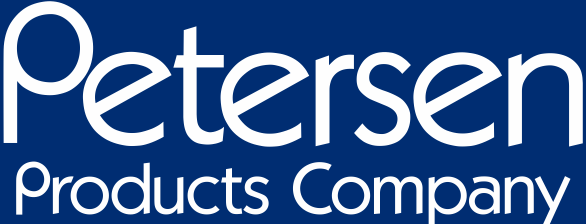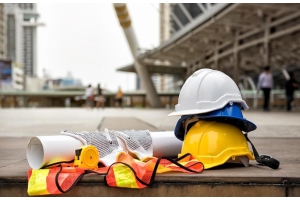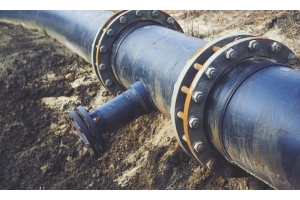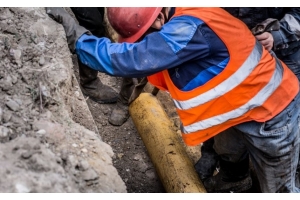Steam & Process Drillship Seawater Valve Repair


Steam & Process Repairs, founded in 1978 and based in Gonzales, Louisiana, primarily serves chemical plants, refineries, and offshore drilling operations with a variety of advanced line repair technologies, including hot tapping, line freezing, and on-stream leak sealing. In 2020, Steam & Process contracted to replace seawater intake valves in a fleet of 16 drillships, vessels designed to conduct exploratory offshore drilling of new wells, and to support offshore crews in a variety of situations. “These were valves below water at the hull of the ship, serving 12” lines that suck in seawater for processing and use in showers and sinks,” explains Michael F. Melsheimer II, a planner and estimator in Steam & Process’s mechanical services division. “They process millions of gallons of seawater, and were failing as corrosion and deposits built up.”
Ideally, this kind of critical repair would be effected in a dry dock situation to avoid the risk of, well, sinking the drillship. However, in 2020, due to ordinary industry commercial pressures exacerbated by pandemic concerns, the entire fleet had been at sea and in service 24/7 for long tours, and it was judged simply impossible to send them to dry dock for any amount of time. This meant that the valve replacement had to be done at sea, 16 times, by hot tapping and insertion of a precisely dimensioned inflatable line plug, always with the risk of a catastrophic failure opening up a cannonball-sized hole below the waterline in a working vessel at sea. Just another on the job in this high-pressure industry.
To build the custom plug, Melshiemer turned to Petersen Products, a 100-year family-owned company based in Wisconsin. They have been making and continuously improving hot tapping and inflatable plugs with their reliable and patented equipment.
Planning For Success
In some ways, the inflatable plug for Stream & Process was a routine build for Petersen—pressures were not particularly high, and the plug was holding back seawater, not a highly corrosive or superheated fluid as is sometimes found in chemical plant settings. Standard materials were used, and the plug was reusable. On the other hand, space for the plug and for the hot tapping procedure were both quite tight, so Melshiemer and Petersen engineers worked together to design a compact and low profile plug that required minimal space for installation. Due to the critical nature of the project for redundancy and emergency backup, Steam & Process took along two of every tool and part needed, including the inflatables. Petersen delivered both about two weeks after the custom order was placed.
“Minimal” is one word for the working area available beside the hull at the valve locations. Other words might include ‘cramped’ or ‘confined’, or even ‘jail-like’—in a detail that sounds like it could have come from a WWI submarine thriller, the four-man crew effecting the valve replacements were locked in with bulkheads sealed for the allotted four hour repair window. “We were tapping into and plugging a 12” line, and the balloon (inflatable) was literally the only thing preventing a disaster at sea,” explains Melshiemer. “We were confident we’d be successful, and that the balloon would hold, but of course there was an emergency plan in place, and part of that plan called for isolating the leak in case the balloon or the line failed.”
Extensive pre-planning was also involved, in fact Steam & Process contracted for two weeks of preparation per project. Most of this prep time consisted of mocking up the valve and line, and the openings and work areas available. Then, the procedure was actually performed multiple times, crew actions were ‘blocked out’ and timed as if for a theatrical performance or pit stop crew, and extensive notes were taken and different options were considered and tested. For example, plug inflation with water rather than air was considered, slight over-inflation of the plug was tested (successfully) to account for any corrosion or build-up in the line affecting seal, and optimum placement of the plug inflation nozzle was established. Shipboard preparations for the repair procedure were also established, such as replacement of all bolts before work, to avoid surprises. Reports on the mockup and testing were quite detailed, including observations like, “Create a small outward flow of the water on the ship to help pull the balloon downward when launching / inflating. Use the water as a current to drag encourage the balloon to set low and not high” and “Do not remove the balloon by pulling out, but remove spool piece above the valve first so that valve can be lifted up to be removed and not dragged out to the side.”
Of course, weeks of client-provided safety training and education for working offshore were also completed, as was an onshore quarantine period, before anyone actually traveled to a drillship. And in the end it all paid off with multiple projects completed with no failures, no alarms, no excitement at all really—which is just how Steam & Process, and Petersen Products, both like it. The client was also happy; the down time of dry-docking was avoided, expensive diver time not needed, and critical seawater inlet valves were safely replaced. So happy, in fact, that similar work has already been ordered, to replace outlet valves in similar drillships






